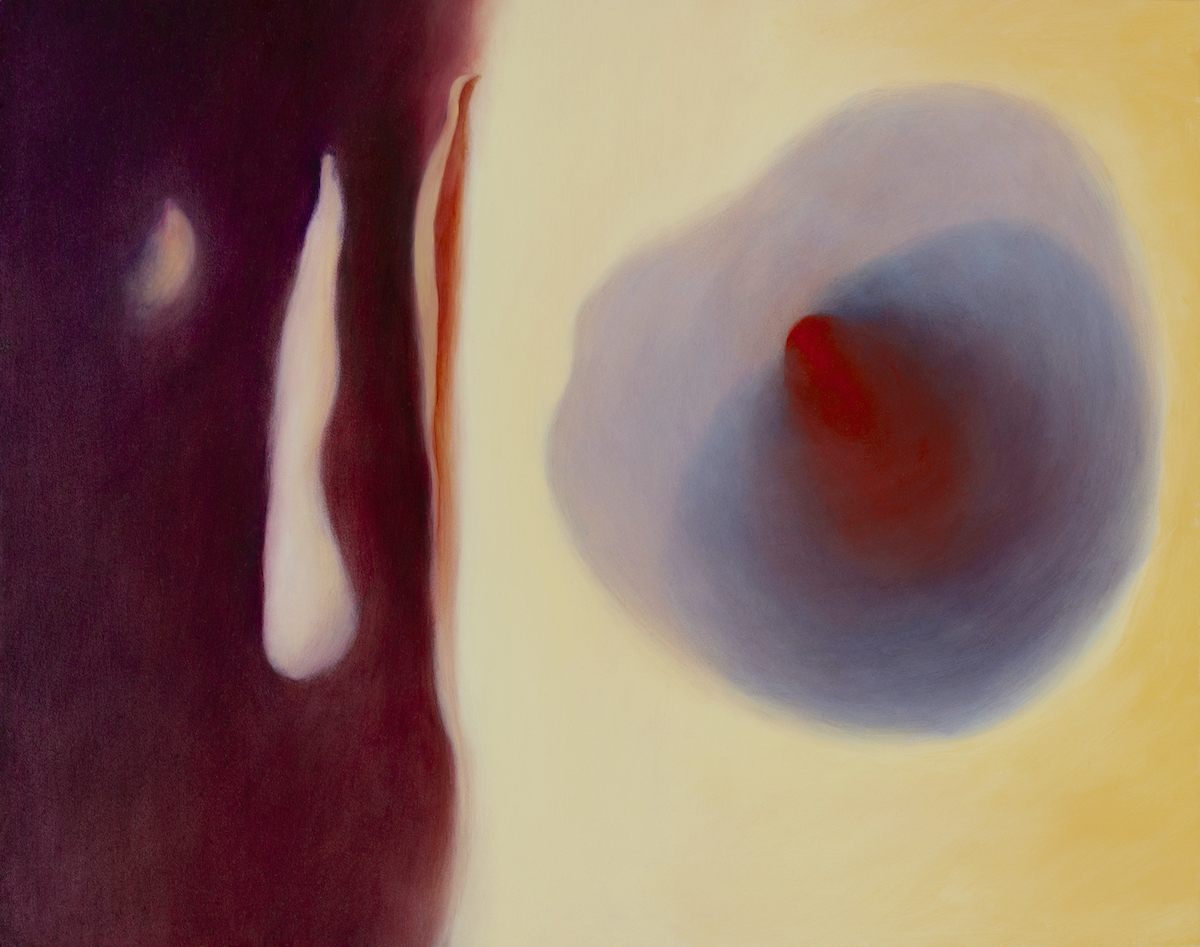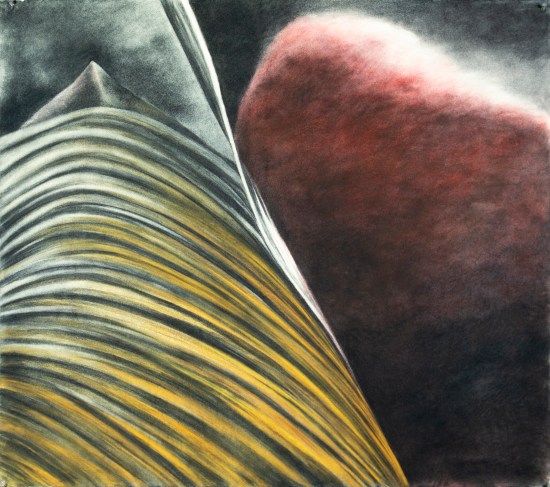‘Marie Schoeff: Amplifying the Between’
Westmont Ridley-Tree Museum Features Work of Santa Barbara Artist Schoeff

In a city with plenty to look at, there’s something to be said for playing the conduit. Amplifying the Between, Marie Schoeff’s dazzling new show at Westmont’s Ridley-Tree Museum of Art, demonstrates the range and beauty that results when an artist commits to being present. Schoeff’s work falls on the abstract side of the spectrum between representation and unmediated expression, but there’s always a deep connection to the place and the moment in which she made each mark. These paintings, drawings, and prints reflect more than four decades of rigorous training and intense focus from a formidable intellect. Still, they flow with a grace that’s as natural as sunlight reflected on water.

Marie Schoeff: Amplifying the Between continues the Westmont Ridley-Tree Museum of Art’s commitment to showing and documenting the careers of significant artists living in Santa Barbara. As such, it reveals yet another instance of an artist evading the centrifugal force of the New York and Los Angeles scenes while still participating in the conversations happening there about the aims and methods of contemporary art. Schoeff, who grew up in Vallejo and Sonoma, attended California State University, Sacramento, where she majored in studio art. In 1977, her work was selected for an exhibition of California women artists by the sculptor and feminist art provocateur Lynda Benglis. Benglis encouraged Schoeff to enroll in the MFA program at Hunter College in New York City, the leading center for postmodern art and critical theory at that time.
It was a glorious and inspiring time to be an artist in New York, and Schoeff and GoodmanTK, who joined her there in 1979, lived at the heart of it in Soho, where they had a loft. A pair of Schoeff’s paintings from that period, “New Era” (1980) and “Eaves” (1981), provide striking evidence of how the young painter caught and rode the tidal wave of painterly energy then coursing through that place and time.
Married in 1982, Goodman and Schoeff left Manhattan and settled on Cota Street in Santa Barbara in 1983. This transition proved to be the beginning of an extended and extraordinarily fruitful engagement with the culture and climate of a subtly cosmopolitan milieu. Four pictures from 1986 show Schoeff applying some of the ideas and approaches she had acquired in New York to Santa Barbara subjects. The brilliant palette and sensuous absorption with surfaces in these works speak to the impact of palms, sunshine, and creamy stucco on her artist’s eyes.
This edition of ON Culture was originally emailed to subscribers on August 13, 2024. To receive Leslie Dinaberg’s arts newsletter in your inbox on Fridays, sign up at independent.com/newsletters.
In 1987, Schoeff entered her first major phase with a torrent of large drawings that feature bold abstract contours and tight cropping. Every one of these arresting works announces the arrival of a significant talent. In “Evening Knows” (1989), Schoeff renders bulging landscape-like mounds of indeterminate origin with a combination of kinetic vigor and chiaroscuro. A lightning bolt of white at the center of the image suggests the source of the notion chosen for the exhibition’s title — Amplifying the Between.

Nancy Doll, then-curator of 20th-century art at the Santa Barbara Museum of Art, recognized the emergence of an artist with a vision as distinctive as that of Georgia O’Keeffe and acquired the work for the museum’s permanent collection. A year later, Schoeff took an even bolder step by applying the technique she had developed in “Evening Knows” to a more extensive work, “M to Me to Mine” (1990), that she drew in public at the Contemporary Arts Forum. This magnificent horizontal drawing, 80 inches high and 21 feet wide, belongs in the pantheon of notable murals made in this city alongside Channing Peake, Ray Strong, and Hank Pitcher. It’s beautiful to have it on display at Westmont, and anyone interested in the history of public art in our city needs to see it.
This monumental drawing phase lingers after the crescendo of “M to Me to Mine” as Schoeff continues to produce masterpieces in that idiom, such as 1992’s “Rubric.” Yet true to her art history training and knowledge, Schoeff insists on further change and development. The mid-1990s finds her putting down the pastels and charcoal in favor of oil and leaving behind the large, tightly cropped adventures on paper for a new series of investigations on smaller pieces of board. These mysterious, vaguely biomorphic shapes float within the frame rather than overflowing it. They are accompanied by a renewed interest in miniature drawings as a form of meditation practice, as seen in the series Lenten drawings from 1999.
Throughout her career, Schoeff has taught studio art, working at one time or another for all three of the city’s institutions of higher education — UCSB, SBCC, and Westmont College. Intent on exploring every available aspect of art, the teacher turned student in 2009 when Schoeff took a class in printmaking. This encounter set off her most recent phase, which continues to the present. Her early prints are trace monotype drawings, a fascinating subgenre of printing that she shares with her husband, Dane Goodman; and the late Keith Puccinelli. These double-sided images offer a glimpse of the artist’s mind at work in multiple dimensions, as each image begets an inversion of itself. After showing these drawings at the Jane Deering Gallery in 2012, Schoeff and fellow artists Linda Ekstrom and Linda Foster began a series of seven annual art retreats at Westmont. There they were able to print on a large-format press. The joyous, sophisticated, and colorful prints Schoeff made at Westmont through the 2010s reveal another vibrant chapter in her career. By combining drawing with attention to geometry, paper, and the intricacies of registration, these works act as a capstone to this exciting and memorable exhibit.

Support the Santa Barbara Independent through a long-term or a single contribution.




You must be logged in to post a comment.